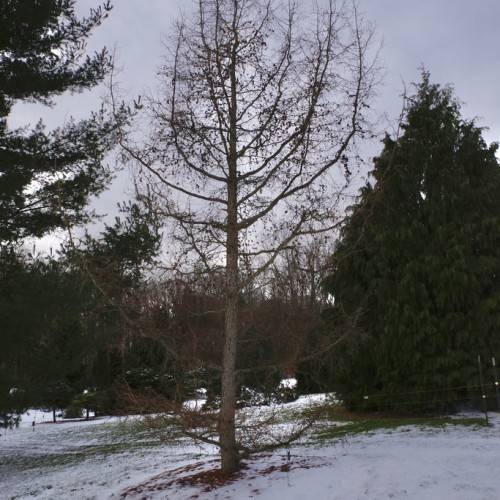
Japanese larch
Larix kaempferi 'Diana'
Cycle:
Perennial
Watering:
Average
Hardiness Zone:
4 - 7
Flowers:
Flowers
Sun:
full sun,part shade
Cones:
Yes
Leaf:
Yes
Growth Rate:
Moderate
Maintenance:
Low
Drought Tolerant:
Yes
Care Level:
Moderate
watering
Watering for a Japanese larch (Larix kaempferi 'Diana') should be done when the soil is dry to the touch and should be extensive. This means that you should water the plant deeply when topsoil feels dry, until the moisture has reached about 8-10 inches deep. You should water about 1-2 gallons of water for approximately every 2 feet of height of the tree. Also, deep watering should be done every 2-3 weeks during warmer months to promote root growth.
sunlight
Japanese larch (Larix kaempferi 'Diana') prefers full sun exposure, so it should receive 6-8 hours of unfiltered sunlight each day. This deciduous conifer is best planted in a location that offers sunny mornings, as this will allow the full benefit of morning sun, and then the shade of trees can provide some protection from the hot afternoon sun. Additionally, due to its fast growth, it should be given as much sunlight as possible to encourage vigorous and healthy growth.
pruning
Pruning Japanese larch trees is best done in late winter or early spring before new growth begins which is typically March or April. As a general rule of thumb, light pruning can be done throughout the year, while heavier pruning is best done in late winter or early spring. This tree species requires light pruning to maintain its desired shape throughout the season. The goal of these light prunings is to remove any broken, dead or diseased branches; remove water sprouts; and to thin out crowded branches to enhance air circulation and light penetration. Pruning should not exceed 1/3 of the total foliage of the tree. Heavy pruning should be done sparingly. In the case of Japanese larch (Larix kaempferi 'Diana'), it is not recommended to remove more than 1 or 2 branches per season. If heavier pruning is necessary, 2 steps should be taken: First, remove smaller branches and second, cut back the remaining larger branches to the desired size. It is important to remember to not remove more than 1/3 of the total foliage.
